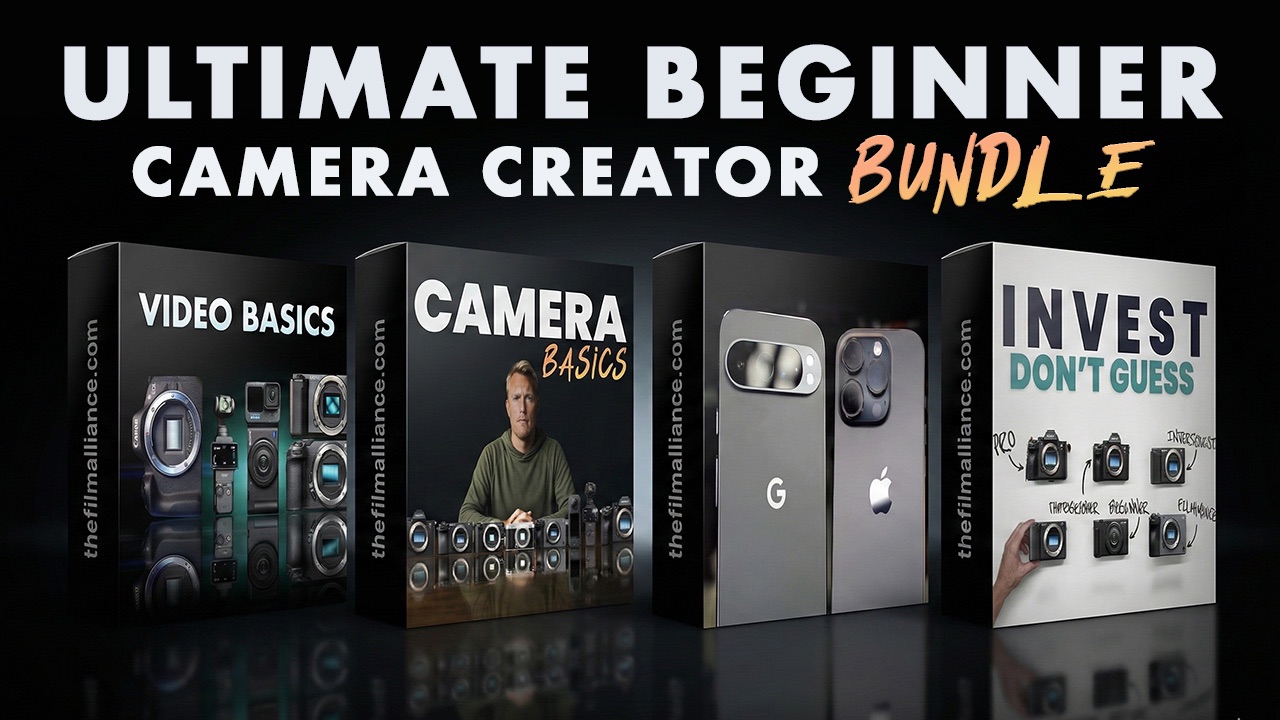
Osmo Pocket 3 vs Insta360 X5: Which Pocket Camera Is Right for You?
Aug 01, 2025Get the full story watching the video above ⬆️
The Insta360 X5 and the DJI Osmo Pocket 3 are two of the most talked-about compact cameras for creators right now. One offers 360-degree creativity and electronic stabilization, while the other delivers mechanical gimbal smoothness and incredible low-light image quality.
But which one should you choose? I spent time shooting with both in real-world situations—low light, travel-style shots, autofocus tests, and more—to help you decide.

360° Creativity or Gimbal Precision?
The Insta360 X5 is a compact 360-degree camera with a new sensor and updated image pipeline. But for this test, I used it in single-lens mode - to treat it like a traditional camera. The Osmo Pocket 3, meanwhile, is a tiny gimbal-stabilized camera with a 1-inch sensor and built-in screen.
Both cameras can shoot in 4K 24fps, 4K 60fps, and even higher frame rates depending on your needs. I used both in everyday shooting scenarios—handheld vlogging, travel-style shots, artistic flyovers, and harsh lighting conditions.

Image Quality & Autofocus
When it comes to image sharpness, the Osmo Pocket 3 gives you contrast-rich footage with great shadow detail, while the Insta360 X5 tends to lift the midtones and push the image warmer. In better lighting, the differences get more subtle—but they’re still there.
- Autofocus on the X5 keeps everything in focus front to back, which is great if you want that "always sharp" look.
- Pocket 3, however, gives you some background blur and separation—but it can “focus pump” if you leave it in continuous focus. Switch it to single focus and it performs much better.

Color Profiles: Flat vs D-Log M
Both cameras offer flat color profiles for color grading.
- The X5 has a “Flat” profile—not quite a LOG format, but it does tone down saturation.
- The Pocket 3 features D-Log M, which provides more dynamic range and better color grading flexibility in post.
For creators who like to grade in post or apply LUTs, the Osmo Pocket 3 is a better choice when shooting log-style footage.

Stabilization: Mechanical vs Electronic
Both cameras do a fantastic job with stabilization:
- The X5 uses electronic stabilization, which surprisingly did well compensating for up-and-down walking movement—even on rough terrain.
- The Pocket 3 uses a mechanical 3-axis gimbal, and the footage is buttery smooth. However, you might see a bit more vertical bobbing if you’re not careful.
In my opinion, the X5 edges out in pure stabilization, but it’s close—especially if you know how to walk with a gimbal.

Real-World Usability
Here are a few usability notes from shooting with both:
- Startup Time: The Pocket 3 boots faster with a single press. The X5 needs a longer hold.
- Body Design: Both feel good in the hand, but the X5 feels more secure. The Pocket 3’s gimbal head can feel fragile when walking.
- Buttons: The X5 has more customizable buttons and a removable battery—a big plus for all-day shooting.
- Storage: Both cameras support removable microSD cards, unlike smartphones.
Frame Rates & Resolution
- The X5 can shoot up to 8K 30fps, but only in 360 mode. Exporting to 16:9 reduces the resolution.
- The Pocket 3 maxes out at 4K 120fps, and since you’re not reframing in post, you keep all that resolution.
Sky Color, Backlighting, and Dynamic Range
Across my tests, the Pocket 3 handled sky colors better, delivering a more realistic tone. It also did better in dynamic range, especially in shadows.
In backlit scenes, the X5 actually performed well, lifting midtones to make faces more visible. The Pocket 3 gave a darker, more contrast-heavy look, which some might prefer depending on the mood you're going for.

Low Light Performance
I saved most of the night footage for a dedicated low-light comparison (coming soon), but even in evening shots, the Pocket 3 clearly outperformed the X5. When using the single lens on the X5, you’re only using part of the sensor—while the Pocket 3 gets the full power of its 1-inch sensor every time.
Portability & Mounting
- The X5 lens glass is exposed—so you’ll want to keep it in the case when setting it down.
- The Pocket 3 folds into itself for protection, making it easier to set on a surface.

Price & Value
- Insta360 X5: $519 USD (Released April 2025)
- Osmo Pocket 3: $799 USD (Released October 2023)
The Pocket 3 originally launched at $519 but has increased in price due to high demand. Still, it’s hard to beat in terms of overall image quality and reliability.
Bonus: Free Project Files + Camcorder LUTs
Want to see how these cameras perform in your own timeline? I’ve made a free project file pack where you can download actual footage from both cameras and test them side-by-side.
And if you like the early 2000s aesthetic, I just released custom LUTs for both cameras that give your footage that nostalgic digital camcorder look. Grab them here.

Final Thoughts
So which camera should you choose?
- The Insta360 X5 is great for creators who want 360-degree reframing, modular shooting, and strong stabilization in a compact form.
- The Osmo Pocket 3 is perfect if you're looking for cleaner image quality, better color science, and superb low-light performance.
If you want something simple that just works out of the box—and gives you beautiful footage with minimal tweaking—the Osmo Pocket 3 takes the win.
Tags: Osmo Pocket 3 vs Insta360 X5, best vlogging camera 2025, low-light camera shootout, DJI Pocket 3 review, Insta360 X5 footage, camera for travel creators, camcorder LUTs, 360 vs gimbal camera



